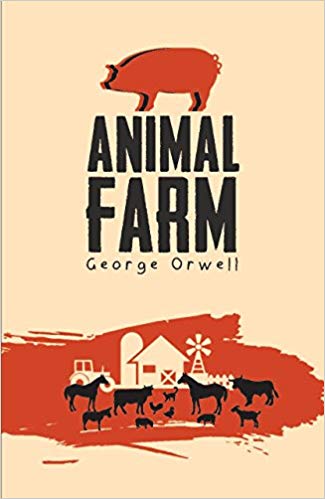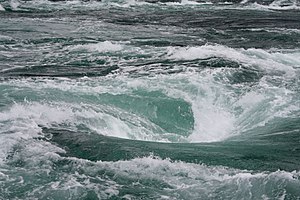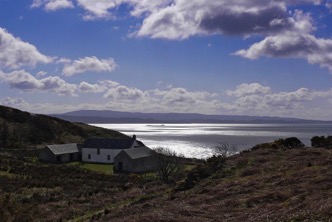Scotlandfest 2019: Isolated islands – the remote lifestyle that inspired Orwell
In 1946 George Orwell (Eric Blair) went with his young son Robin, Robin’s nanny Susan Watson and Susan’s boyfriend to live on the Isle of Jura.
Although his stays there were intermittent and he died just four years later, it was on Jura that he finally wrote his most famous novel.
It was a bright cold day in April, and the clocks were striking thirteen.

Nineteen Eighty-Four was published in 1949. It is the story of Winston Smith, an everyman who tries to oppose The Party running the totalitarian state that Britain has become, and of the Thought Police, used by the Party to stamp out anyone who does not conform to its regime.
The book has been translated into at least 65 languages and sold millions of copies – but why did Orwell feel the need to retreat to a tiny bog-covered Hebridean island to write it?
This question has fascinated poet, writer, teacher – and island dweller – Norman Bissell for years, so now he has written Barnhill: A Novel to help us to understand this complex, difficult man.
In 1944 Orwell was already suffering from tuberculosis. He was hugely overworked, active in political lobbying, and inundated with writing (3 or 4 articles every week, mainly for Tribune). He felt ‘smothered under journalism’ and wrote to Andrew Gow;
I have become more and more like a sucked orange.
He had long had a notion of a ‘Golden Country’, a term he had first applied to the Upper Thames Valley, where he had spent most of his childhood, then to Wallington in Hertfordshire, where he had lived in The Stores, an old house with no electricity or running water, and re-opened it as a shop. But after visiting Jura in 1944 and meeting the Fletchers, owners of the Ardlussa estate, the island became the ultimate Golden Country. He decided to move there.

The Fletchers had shown him Barnhill, an abandoned farmhouse on their land. It was lit by paraffin lamps, Calor Gas was used for cooking, there was no phone and the only access was by walking a 5 mile track from the Fletchers’ own house, or by boat.
Orwell saw it as the perfect place to escape all the pressures of his London life, and to write the book he had been incubating since his time fighting in the Spanish Civil War.
He had never before had the means to write fiction full time, but Animal Farm, published in August 1945, was a best seller; suddenly he had money.
Orwell had always been interested in natural history; Barnhill was surrounded by it. He now saw the dangers of political dictatorship and industrial technology as a threat to the natural world – and he also saw himself as a potential ‘good lifer’, growing or catching his own food, doing up the house, making his own furniture (‘I’ve always liked Robinson Crusoe‘.) He eventually managed to persuade his wife Eileen to move with him, but in March 1945 she died, suddenly and unexpectedly, during a hysterectomy. Bereaved, he decided to go to Jura anyway.
The image of Orwell alone on a remote croft with only his son for company is not, Bissell says, quite right. In fact there was an endless stream of visitors – some uninvited – from his sister Avril (who, Robin Blair recalls, was the only practical one and did most of the cooking) and her family, to the poet Paul Potts. They walked, sailed, and almost drowned in Corryvreckan.

In October, when Orwell returned to London, he’d only written 50 pages of the novel.
Nevertheless, he returned to Jura the following year, and eventually got on with it. By then, however, he was desperately ill with tuberculosis, and was admitted to Hairmyres Sanatorium in Lanarkshire. Although the treatment he received there (streptomycin, largely purveyed by his lifelong friend and fellow old Etonian David Astor, editor of The Observer) seemed to work, and he returned to Jura in the summer of 1948, by January 1949 he was back in another sanatorium at Cranham in Gloucestershire.
He never returned to Jura, and died at University College Hospital in London on 21st January 1950, having married Sonia Brownell four months previously.
Bissell decided to write about Orwell’s time at Barnhill after moving to another island, Luing; his cottage is just 15 miles from Jura. Orwell’s widow Sonia had always protected his wish to have no biographies written, but eventually several did appear, notably those by Gordon Bowker, Bernard Crick and DJ Taylor, and Bissell felt there was no space for any more non-fiction.
In 2006 he visited Barnhill for the first time; the house was locked up but he still felt an affinity for it, and afterwards he couldn’t stop wondering what it had been like to write a novel in such a remote place. He initially planned a screenplay, but he’s still trying to raise funds for that, so he wrote a novel as a way of sharing Orwell’s many good ideas with the wider public.
Bissell is also very interested in islands generally, and on the way that remote living can foster creativity;
You become aware of the land, the sea, the sky, the changing light…you can get a clarity…you are right up against the natural world and can be inspired by it if you are open to it.
He moved to Luing from Knightswood in Glasgow, which he found to have little community involvement, although his childhood home of Partick had more. On islands, he says, people expect to be self-sufficient, to get things done themselves;
Everyone’s on a committee of some sort.
There are, he explains, creative arts flourishing on Jura and several other islands. Jura’s FL:EDGE is a collective of artists, arts activists and professional arts workers.
Eigg, which has been in community ownership since 1997, has attracted musicians, photographers, writers, textile artists and basket makers, and has its own record label. It is self-sufficient in energy, harnessing its own wind, solar and hydro power. Gigha, itself the subject of a 2002 community buy-out, has an active arts programme coordinated by the Gigha Gallery
Bissell is also the director of the Scottish Centre for Geopoetics, an international movement that sees the universe as a potentially integral whole. It seeks to unify the various domains into which knowledge has been separated by placing the planet Earth at the centre of experience.
It’s a way of being in the world and responding to it.
He is the lead editor of Stravaig, the centre’s online (and recently also hard copy) journal.

Barnhill still belongs to the Fletchers, who let it out for holidays. In 2018 Bissell visited the house with Robin Blair and members of the Orwell Society, which runs trips every two years. Orwell’s attempts at self-sufficiency, hampered by his ill health, were not hugely successful. The furniture he made broke, and there is little trace of the garden he tried to cultivate at the house. But it was at Barnhill that one of the greatest novels of the 20th century came to life, a story that Robert McCrum has called ‘eternally fresh and contemporary’, and one that continues to resonate, perhaps with increasing urgency, as the years pass.
Barnhill: A Novel by Norman Bissell is published by Luath Press Limited. To find out more about Geopoetics, visit http://www.geopoetics.org.uk To find out more about the Orwell Society, visit https://orwellsocietyblog.wordpress.com/
For information about renting Barnhill, visit http://www.escapetojura.com/Barnhill.html
Scotlandsfest is organised by https://www.luath.co.uk/ as part of the Edinburgh Fringe Festival.
